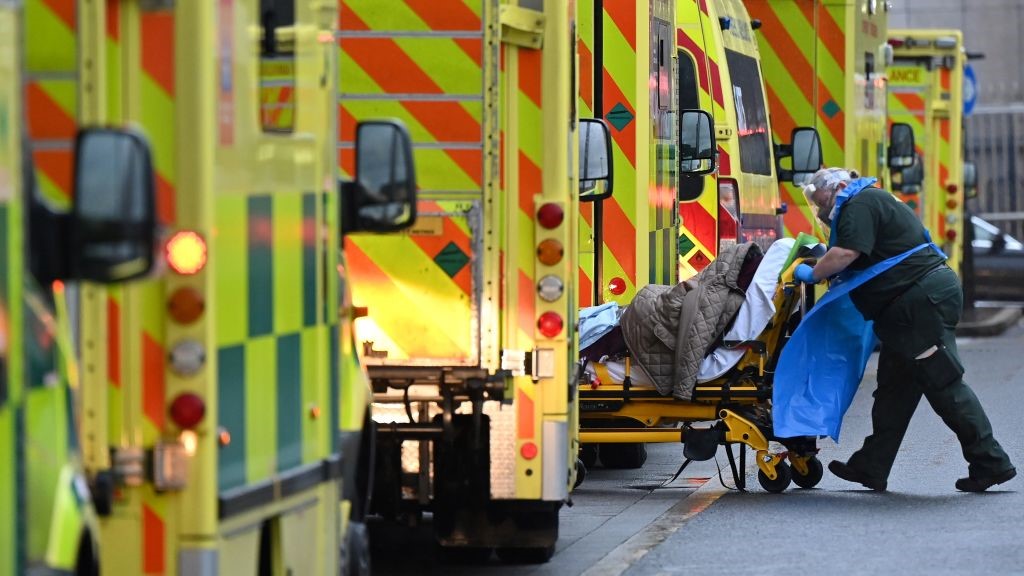13 horrific firework injuries that will keep you cautious on July 4
As July Fourth celebrations take off across the U.S., so will the number of firework-related accidents and hospital visits.
Freedom. Hot dogs. Amputations. It's July Fourth in America, and U.S. hospital visits are about to skyrocket like so many Roman candles. Between 2000 and 2010, U.S. American emergency rooms treated an estimated 97,500 patients for fireworks-related injuries, ranging from burns to blindness to the total loss of fingers and forearms. It's "an annual trail of disaster following the glorious [holiday]," as one doctor put it way back in 1910 — and, as long as people keep blowing things up, it's here to stay. In the spirit of freedom and science, here are some of the strangest fireworks injuries ever recorded.
Rare wound infection
In 2021, surgeons amputated a 56-year-old man's leg after he was injured in a firework explosion accident and his wounds became infected. The man sustained severe burn injuries to his face, right arm and right leg and presented "foreign objects in the scrotum, left medial thigh, and medial forearm," according to a report in Radiology Case Reports.
In the first documented case of its kind, the patient's wounds became infected with Vibrio mimicus — a pathogen related to the bacteria that cause cholera (V. cholerae) that thrives in marine or brackish waters and can cause gastroenteritis when ingested in seafood. V. mimicus can also spread through fresh water, which is how physicians think the patient was infected. "The patient's infection was likely acquired at the burn site due to contamination of burn with stream water," they wrote.
Burn wound infections are known to increase fatality rates, according to the report.
Physicians deemed the patient's right leg unsalvageable and amputated it above the knee. The man later received a replacement prosthetic and made a "full recovery," according to the report.
Take it on the chin
A woman in her early 30s suffered a "devastating and uncommon injury" after she tripped while lighting a large, professional-level shell firework earlier this year. As she stumbled, the rocket hit the woman directly in the chin and detonated, blasting off her lower lip, fracturing her jawbone and causing "massive trauma" to her lower face.
Surgeons cleaned the wounds and removed shell fragments before they reconstructed the patient's jaw, chin and lips using skin from her forearms, according to a case report published in 2023 in the journal ePlasty.
Get the world’s most fascinating discoveries delivered straight to your inbox.
Two months after the reconstructive surgery, doctors reported "satisfactory aesthetic outcomes, oral competence and speech," even though they did not manage to re-animate or innervate the lower lip. They noted, however, that the patient "did continue to experience such challenges as drooling while eating."
Splayed hand
Hands and fingers are at higher risk than any other body part in firework accidents. In 2019, surgeons recorded the case of a 30-year-old man who was holding a lit firework when it exploded, ripping his right hand to shreds. Pictures published in a BMJ Case Report show the patient's "splayed" and "degloved" hand (meaning the blast stripped the skin from his fingers), as well as several fractures and exposed bones.
The injury was so severe that physicians deemed the middle finger "unsalvageable" and amputated it. Six weeks later, the patient, who was a professional and right-handed carpenter, reported near-normal sensation in his remaining four fingers and, despite some stiffness, achieved "adequate function of the hand." However, doctors noted he might not be able to return to his former work.
Blasted eardrums

In 2017, a wedding guest was standing near a firework box when it unexpectedly ignited ahead of the planned display, bursting both the man's eardrums. The 30-year-old presented to the emergency department with multiple triangular holes in his tympanic membranes, which separate the outer ear from the middle ear. The man lost his hearing and experienced tinnitus — hearing ringing and other sounds that do not come from an outside source.
The shape of the perforations was characteristic of traumatic ear injuries, according to a case summary in the New England Journal of Medicine (NEJM), but doctors were able to patch them up. Three months after the incident, the patient's eardrums had healed, and he recovered his hearing.
Foreign bodies in the cornea
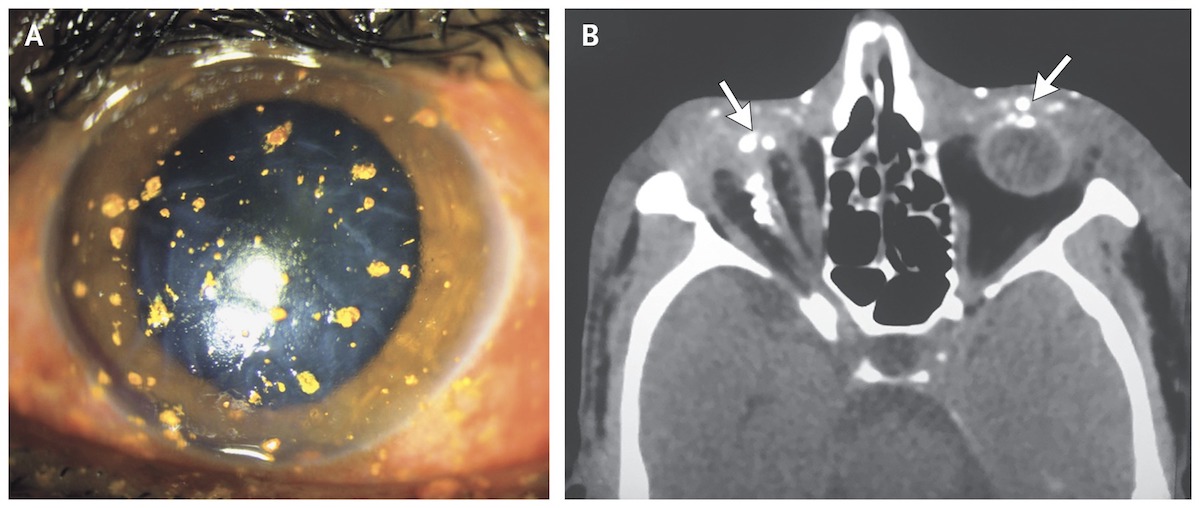
In 2017, a 44-year-old man was lighting a firework, when the rocket exploded in his face, throwing hot shrapnel into both of his eyes. According to a report in The New England Journal of Medicine, the man was "unable to perceive light in the right eye" and had the vision in his left eye reduced to 20/80 acuity by the time he checked into the emergency room. Surgeons removed multiple "foreign bodies" (shown in panel A) from both corneas. Still, the man's vision never returned in his right eye, and his left eye improved only to 20/40 acuity. Eye damage is a common result of high-velocity injuries. Always wear safety goggles when dealing with explosive materials.
A leg full of dynamite
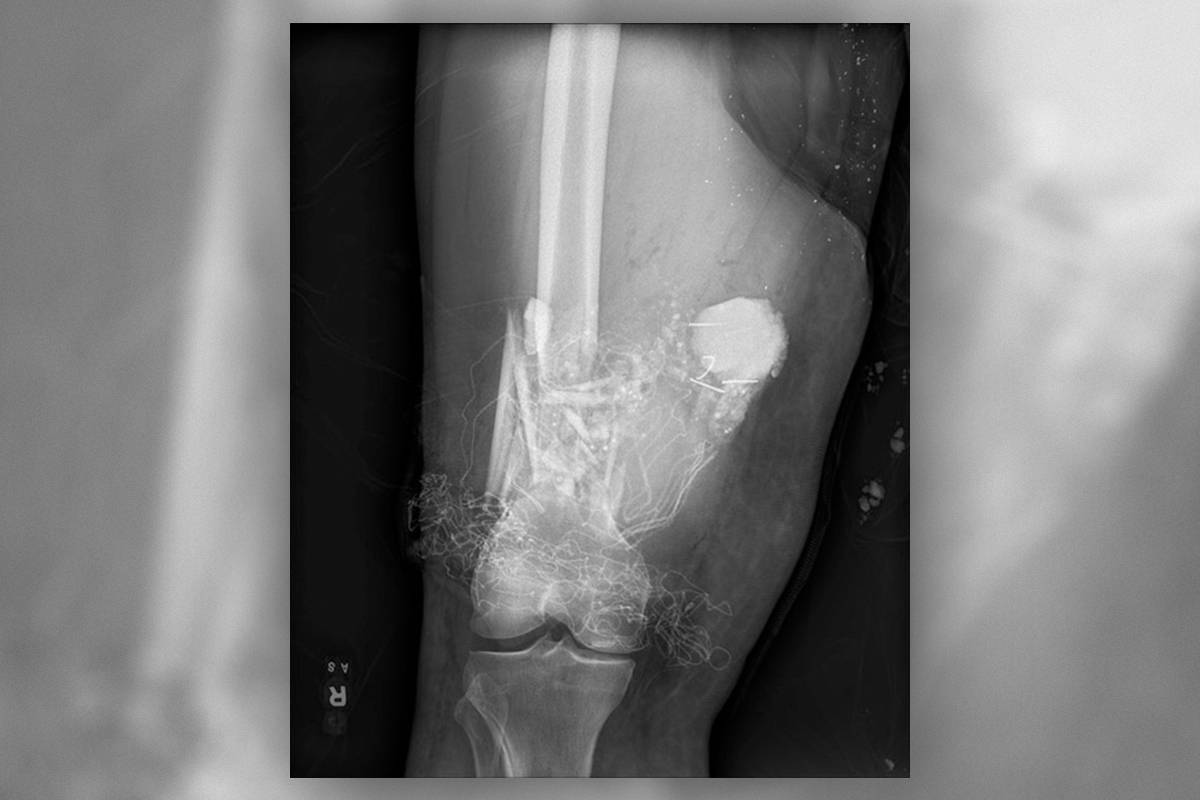
It takes an especially calm medical team to deal with a patient whose leg could literally explode. That almost happened in 2017, when a man arrived at the San Antonio Military Medical Center with an unexploded firework lodged in his leg. The man had been trying to set off a mortar-style firecracker, when the rocket ignited and blasted straight into his leg. Upon arriving at the hospital, he was quickly quarantined from other patients, and an Explosive Ordnance Disposal team had to supervise his treatment. Thankfully, the firework was removed without incident.
Blunt-force trauma

Fireworks don't need to "pop" to do big damage. In 2017, a 25-year-old Indiana man was killed in Kentucky when a legal firework launched directly into his chest, striking him hard enough to stop his heart. The man died shortly after at the local hospital. "The preliminary cause of death is blunt force trauma," a coroner at the Henderson County Coroner's Office told IndyStar.com. "The type [of firework] is supposed to explode 100 feet [30 meters] in the air," he added. "They were lighting legal fireworks."
Nothing but his shoulders down
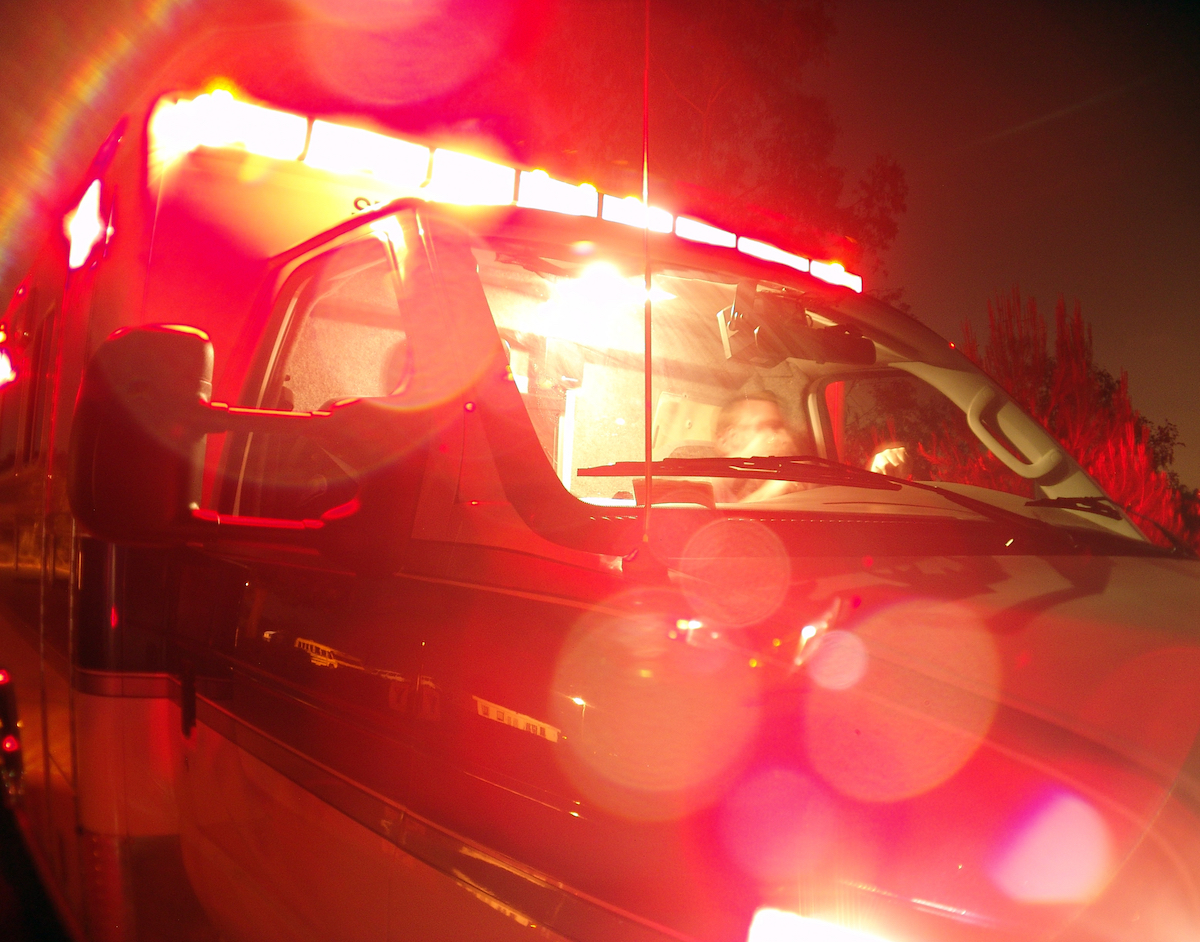
In one of the most gruesome instances of modern fireworks malfunctioning, a 41-year-old man in North Dakota was decapitated while setting off Independence Day rockets in 2011, NBC News reported. The man was lighting fireworks outside his mobile home, when a humungous bang caught his neighbor's attention. The neighbor watched as the man walked into the street to light another firecracker — and then disappeared in a terrible cloud of smoke. "Within 10 seconds of us talking to him, he lit it, and all we saw was a cloud of smoke, a bang," the neighbor told NBC News. "When I walked up to his body, it was nothing but his shoulders down."
Phosphorus poisoning
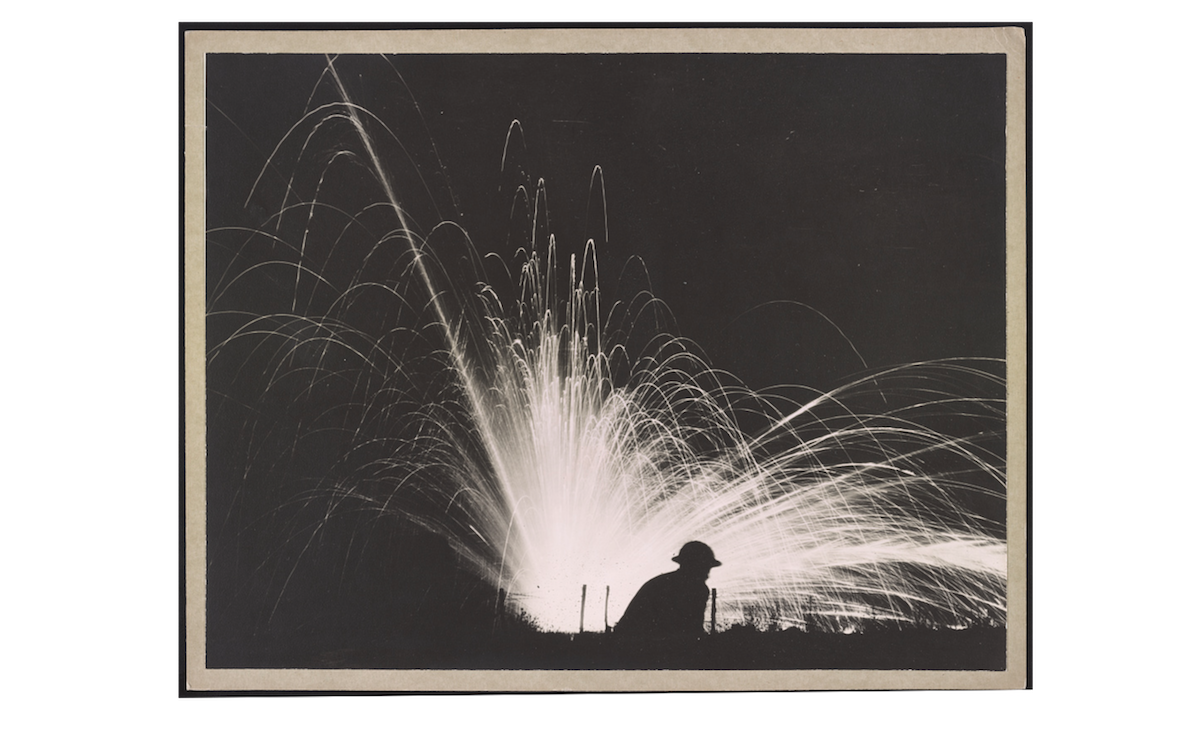
Because white phosphorus goes up in flames when its temperature reaches about 86 degrees Fahrenheit (30 degrees Celsius), the 15th element is a common ingredient in things that go boom. These include match heads, Molotov cocktails and — you guessed it — fireworks. In the 1940s, the NEJM reported that several children had died from "acute phosphorus poisoning" after eating fireworks — "especially the so-called 'spit devil' variety," the NEJM reported. Remember: Phosphorus is toxic, and there are much better things to eat on Independence Day than fireworks.
Hands off
It's not unusual for people to lose fingers or entire hands when fireworks explode too close, too soon. To gain a brand-new hand out of the incident is a bit more remarkable. In 2000, a 38-year-old man received a successful hand transplant after losing his dominant left hand in a fireworks-lighting accident 13 years earlier, the NEJM reported. The graft healed well, and the transplant, sourced from a deceased 58-year-old donor, proved far more useful than a prosthesis. "At one year, the patient could perform many functional activities with his left hand that he had not been able to perform with his prosthesis, such as throwing a baseball, turning the pages of a newspaper, writing, and tying his shoelaces," the NEJM reported.
Patriotic tetanus

Tetanus, or lockjaw, occurs when Clostridium tetani bacteria infect the body, causing painful muscle contractions (particularly in the jaw). These bacteria are common in soil but can be thrown into the air as infectious spores if that soil is disturbed — say, by exploding fireworks.
Thus, in the late-19th century, tetanus cases spiked every year around Independence Day, when fireworks and celebratory gunshots blasted chunks of C. tetani-harboring soil all over bystanders' bodies. According to the American Medical Association, this so-called "patriotic tetanus" killed more than 400 people in 1903 and was likely responsible for two-thirds of all explosive-related deaths from 1903 to 1909. Thankfully, a tetanus antitoxin became available in 1900, and the world's first tetanus vaccine was introduced in 1924. In 2015, fewer than 10 fatal cases of tetanus were reported in the U.S.; however, tens of thousands of people still die of tetanus annually in less-developed nations.
Blew the house to atoms

Fireworks were temporarily outlawed in England in the late 1600s, but that didn't stop people from making them — it just stopped people from making them safely. Case in point: In 1810, a fireworks maker and her child assistant were readying rockets for King George III's golden jubilee, when 200 barrels of gunpowder ignited and "blew the house, and another adjoining, to atoms," according to "Pyrotechnics: The History and Art of Firework Making" (University of Michigan Library, 1922).
Blown to a considerable height

Fireworks factory explosions were a widespread problem in the 18th and 19th centuries, Brock wrote. Tragically, children were often the victims. In 1821, a child employed by a fireworks maker set a rocket by the fire to cool and nearly blew up the neighborhood. (He barely escaped "with his jacket on fire," a local reported.) Later, in 1825, two boys in a Whitechapel, London fireworks factory "were blown to a considerable height and were much injured" while ramming gunpowder into pyrotechnic rockets, according to a village bulletin. The Gunpowder Act of 1860 restored some semblance of regulation to the clearly explosive industry.

Brandon is the space / physics editor at Live Science. With more than 20 years of editorial experience, his writing has appeared in The Washington Post, Reader's Digest, CBS.com, the Richard Dawkins Foundation website and other outlets. He holds a bachelor's degree in creative writing from the University of Arizona, with minors in journalism and media arts. His interests include black holes, asteroids and comets, and the search for extraterrestrial life.
- Sascha PareStaff writer






